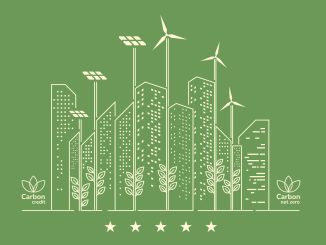
In 2020, Virginia became the seventh US state to set energy storage procurement goals for utilities. This was achieved with the passage of the Virginia Clean Economy Act (VCEA) by the General Assembly. The act aims to achieve zero carbon emissions by 2050 and 100 per cent renewable energy generation by 2045. The act also set one of the country’s largest energy storage targets at 3.1 GW by 2035 and directed the Virginia State Corporation Commission (SCC) to approve new energy storage projects to meet the target. The target is split between the state’s two largest utilities – the Appalachian Power Company (APCo), which is an American electric power utility, and the Virginia Electric and Power Company, a Dominion Energy utility. Both companies are required to petition the SCC for approval to construct or acquire 400 MW and 2,700 MW of energy storage resources (ESR), respectively, by 2035.
In line with the VCEA, the SCC started laying down the energy storage rules in June 2020, and published draft regulations in September 2020. In December 2020, the SCC adopted new regulations to ensure that the state’s utilities meet the VCEA storage targets. The regulations set interim targets and provided a framework to achieve them, which included competitive solicitations, behind-the-meter incentives, non-wires alternatives (projects that use non-traditional solutions such as energy storage to delay or remove the need for transmission infrastructure upgrade) and peak demand reduction programmes (projects aimed at shifting the time of use of electricity from one period to another for the grid’s overall economic and reliability benefit). The SCC has adopted a technology-neutral definition of energy storage, covering any technology that is capable of absorbing energy, storing that energy for a period of time, and re-delivering that energy after storage.
As per the regulations, APCo must develop or purchase 25 MW of energy storage capacity by December 31, 2025, followed by an additional 125 MW by the end of 2030 and 250 MW by the end of 2035. Meanwhile, the Dominion must meet the interim energy storage targets of 250 MW by 2025, 1,200 MW by 2030 and 2,700 MW by 2035. The regulations state that at least 35 per cent of the energy storage facilities set up by APCo or Dominion must be purchased from an entity other than the utility and owned by a party other than APCo or Dominion. Although some stakeholders argued that the long timelines for deployment targets may result in missing the benefits of early deployment, the SCC stated that the targets are designed to provide continuous development complementary to the VCEA. Also, the utilities are free to seek approval for deploying energy storage capacities above the interim targets.
Beginning in 2021, each utility will have to sponsor at least one competitive solicitation for energy storage resources per calendar year. APCo or Dominion must also submit the annual renewable portfolio standard plans, which include their progress towards meeting the interim storage targets, and their goals of installing at least 10 per cent of such projects behind the meter. The utilities have to seek the SCC’s approval for behind-the-meter incentives, the non-wires alternative programme and the peak demand reduction programme related to energy storage. If the utility proposes to offer such incentives to customers through a demand-side management programme, it must seek approval through the existing processes. All non-utility energy storage facilities (1 MW and above) have to obtain an SCC permit. Notably, permissions are applicable for facilities with capacities equal to or more than 1 MW instead of 100 kW as originally proposed in order to appropriately balance the burden of compliance with the need to determine and monitor the full impact of these resources on the electric system. The SCC notes that it is aware that the Federal Energy Regulatory Commission’s proposed Order 2222 (which paves the way for aggregated distributed energy resources in order for aggregators to participate in wholesale power markets) will impact the deployment of energy storage and the participation of Virginia-sited energy storage in the wholesale markets, also enabled by the aggregation of smaller resources and behind-the-meter incentives.
The SCC will create a legislatively mandated task force to evaluate and analyse the regulatory, market and local barriers to the deployment of distribution and transmission-connected bulk ESRs. This will help integrate renewable energy into the grid, reduce costs for the electricity system, enable customers to deploy storage technologies to reduce their energy costs, and allow to participate in electricity markets for energy, capacity and ancillary services. The SCC has stated that the issues raised by the stakeholders during the implementation of these regulations will be further addressed and evaluated by the task force.
Net, net, Virginia is well poised to achieve its energy storage goals in the years to come.



